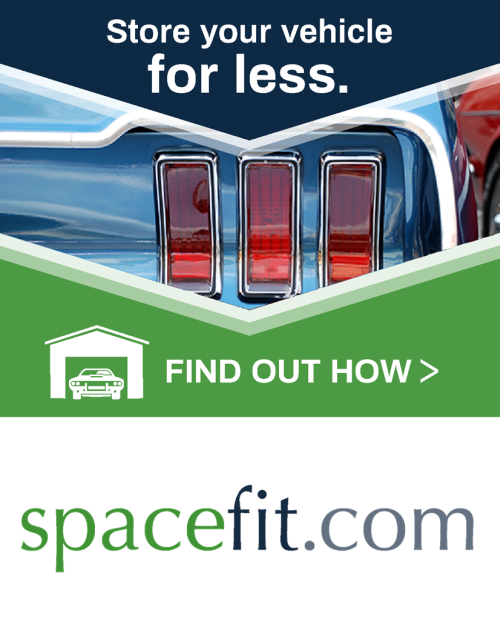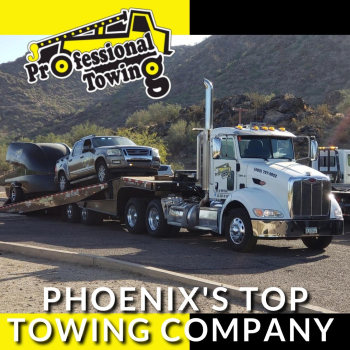

Welcome to Bumper to Bumper Radio!
Drive in anxious and cruise out confident with the best automotive information for your vehicle! Tune in to KTAR News 92.3 every Saturday from 11 a.m. to noon as Matt Allen helps listeners with their car problems. The show call in number is 602-277-5827.
Latest News From Bumper to Bumper Radio

Last week was the first time since early June that the national gas price average jumped more than a nickel in under a few days. On the week, it’s a dime more expensive at $2.66 with half of states seeing prices increase by 10 cents or more. However, even with the significant increase, the national average is still cheaper compared to last month (-6 cents) and last year (-19 cents).
Spurred by the Saudi Arabian oil facilities attacks the weekend prior, crude oil (West Texas Intermediate – WTI) increased as much as $10/bbl at its highest point early last week to nearly $64/bbl. Gasoline stations reacted just as swiftly as the market, raising local retail prices by as much as a quarter, which pushed the national average up six cents overnight last Tuesday. However, by the end of last week, crude was down to $58/bbl and gas prices started to stabilize as reports surfaced that Saudi facilities should be fully operational by end of September.
“At $2.66, the national average is a dime more expensive that last week. The good news is we are seeing downward movement with crude oil prices and stabilization at gas pumps, but Americans can expect some fluctuation through the end of the month,” said Jeanette Casselano, AAA spokesperson. “Should Saudi’s crude production be back to full capacity shortly, the price spikes are likely to be temporary.”
In its latest report, the Energy Information Administration (EIA) measured U.S. demand at 8.9 million b/d, which is a substantial 900,000 b/d drop from the previous week and a low reading not seen since February. The decrease in demand amid the spike in crude oil prices could help to keep gas price fluctuations more moderate through the end of the month.
Quick Stats
The nation’s top 10 least expensive markets are: Mississippi ($2.32), Louisiana ($2.32), Arkansas ($2.33), Alabama ($2.34), South Carolina ($2.35), Oklahoma ($2.37), Virginia ($2.37), Texas ($2.38), Tennessee ($2.39) and Missouri ($2.40).
The nation’s top 10 largest weekly increases are: Kentucky (+19 cents), Michigan (+18 cents), Georgia (+17 cents), Minnesota (+16 cents), Maryland (+14 cents), Iowa (+14 cents), Delaware (+14 cents), Mississippi (+14 cents), New Mexico (+13 cents) and South Carolina (+13 cents).
West Coast
Motorists in the West Coast region are paying the highest pump prices in the nation, with all states in the region landing on the top 10 most expensive list today. California ($3.74) and Hawaii ($3.66) are the most expensive markets in the country. Washington ($3.20), Nevada ($3.15), Oregon ($3.07), Alaska ($2.97) and Arizona ($2.89) follow. All state averages in the region have increased on the week. California (+11 cents) saw the largest increase, followed by Arizona (+6 cents) and Nevada (+5 cents).
The EIA’s recent report for the week ending on September 13, showed that total West Coast motor gasoline stocks decreased by 133,000 bbl to 28.6 million bbl. This level is approximately 340,000 bbl lower than in mid-September 2018. Amid rising oil costs, shrinking stocks put additional pressure on prices as they spiked last week. Motorists in the region will likely see prices continue to stay high this week as the market continues to adjust to higher crude prices.

Throughout October automotive repair shops across the country are looking to end breast cancer with a unique fundraising campaign.
During the Month of October H&I Automotive and more than 100 other Independent Auto Repair Shops across the US are raising funds for a breast cancer vaccine as part of the Brakes for Breast fundraiser.
As part of the fundraiser, the auto repair facilities are giving away FREE (quality) brake pads or shoes. The customer simply pays the labor and any other ancillary parts necessary to complete the brake job and the shops then donate 10% of the brake job directly to Dr. Vincent Tuohy & the Cleveland Clinic Breast Cancer Vaccine Research Fund.
100% of what we donate goes directly to research!
2019 marks the ninth year for the Brakes For Breasts fundraiser.
2011 Our 1st year - 5 shops in Ohio raised $10,000
2012 Our 2nd year - 27 shops in 17 states raised $32,848
2013 Our 3rd year - 66 independent auto repair shops in 27 states raised $66,499
2014 Our 4th year – 143 independent auto repair shops in 29 states raised $115,236.53
2015 Our 5th year – 174 independent auto repair shops in 32 states raised $141,868
2016 Our 6th year - 131 independent auto repair shops in 35 states (most ever!) $125,867.37
2017 Our 7th year - 114 independent auto repair shops in 34 states raised $114,389.20
2018 Our 8th year – 138 independent auto repair shops in 34 states and 2 countries raised $141,061.80
To date donation total is $747,771.70!

• Accord continues to offer award-winning combination of performance, comfort, technology and style
• Honda Sensing® standard on all trims, includes Traffic Sign Recognition
• Only midsize sedan in its class offering a manual transmission
TORRANCE, Calif., Sept. 16, 2019 -- With a choice of two turbocharged engines, standard Honda Sensing®, and a spacious and high-tech interior, the 2020 Honda Accord begins arriving at dealer showrooms tomorrow, September 17, with a starting Manufacturer's Suggested Retail Price (MSRP) of $23,8701 (excluding $930 destination and handing). The 2020 Accord Hybrid on-sale will be announced separately.
The 10th-generation Accord offers midsize sedan shoppers a combination of performance, refinement, technology, and value that has made it the winner of dozens of awards and accolades since its introduction, including 2018 North American Car of the Year. The 10th-gen Accord has been called "America's Best Sedan" by Car and Driver, and Accord is the all-time leader in the magazine's "10 Best" awards with 33 appearances on the coveted list.
2020 Accord buyers can choose between two turbocharged 4-cylinder engines: a 1.5-liter, DOHC direct-injected engine with a peak output of 192 horsepower and 192 lb.-ft. of torque (both SAE net) backed by a CVT automatic transmission, or a 2.0-liter VTEC Turbo® with 252 peak horsepower and 273 lb.-ft. of torque (both SAE net) with a 10-speed automatic. In Sport trims, both engines are also available with a 6-speed manual transmission, and Sport trims are also available in two exclusive colors: San Marino Red and Still Night Pearl. All Honda Accords for the U.S. market are manufactured exclusively at Honda's Marysville, Ohio, auto plant using domestic and globally-sourced parts.
Safety and Driver Assist Technology
Standard on every 2020 Honda Accord Honda Sensing® suite of safety and driver-assistive technologies that includes Collision Mitigation Braking System™ (CMBS™) with pedestrian sensing, Lane Keeping Assist, Adaptive Cruise Control with Low-Speed Follow and Traffic Sign Recognition (TSR). Also standard are automatic high-beam headlights, a Multi-Angle Rearview Camera and a driver attention monitor, while additional available driver-assistive features include blind spot information (BSI) and rain-sensing windshield wipers.
Thanks to its next-generation Advanced Compatibility Engineering™ (ACE™) body structure and advanced safety systems, Accord achieves a 5-star Overall Vehicle Score from the NHTSA in its NCAP safety ratings, and is anticipated to receive a Top Safety Pick rating from the Insurance Institute for Highway Safety (IIHS), including the highest available IIHS rating of "Good" in all crashworthiness tests.

ORLANDO, Fla. (September 12, 2019) – It’s going to cost more for those looking to buy a new car this year. Finance costs on new car purchases have jumped 24% in 2019, according to new AAA research, pushing the average annual cost of vehicle ownership to $9,282, or $773.50 a month. That’s the highest cost associated with new vehicle ownership since AAA began tracking expenses in 1950 and a reminder that the true costs of owning a vehicle extend far beyond maintenance and fuel.
“Finance costs accounted for more than 40% of the total increase in average vehicle ownership costs,” said John Nielsen, AAA’s managing director for Automotive Engineering & Repair. “AAA found finance charges rose more sharply in the last 12 months than any major expense associated with owning a vehicle.”
The spike in finance charges – which rose from $744 to $920, a nearly $200 increase — was fueled by rising federal interest rates and higher vehicle prices. It comes as 72-month car loans have become increasingly common – meaning car buyers are paying more, and longer, for vehicles that lose value the moment they’re sold. Long-term loans offer lower monthly car payments, but they ultimately cost the consumer more. AAA found that, on average, every 12 months added to the life of a loan adds nearly $1,000 in total finance charges.
“Smaller monthly payments may be tempting to potential buyers, but they can add big costs in the long run,” Nielsen said.
The new figures come from Your Driving Costs, which reviews nine categories of vehicles – consisting of 45 models – to determine the average annual operating and ownership costs of each. AAA focuses on top-selling, mid-priced models and compares them across six expense categories: fuel prices; maintenance/repair/tire costs; insurance rates; license/registration/taxes; depreciation; and finance charges. Annual average costs increased in each category.
Of all costs, depreciation, a measure of how quickly a car loses value, remains the single biggest cost of ownership, accounting for more than a third (36%) of the average annual cost. It slowed a bit this year, with vehicles included in the study losing an average of $3,334 a year, up $45 – or 1.4% – from last year. In 2018, depreciation rose by $117, or 3.7%. In two vehicle classes this year – small and medium sedans – depreciation costs actually declined.
Other key findings of this year’s Your Driving Costs include:
Average fuel cost rose to 11.6 cents per mile, 5% higher than last year. The per-mile increase was driven by gasoline prices, which are up 15.6 cents per gallon over the timeframe covered by the study. Electricity prices for EV charging also rose 0.1 cent per kilowatt-hour (0.08%), but the market share of the electric vehicles in the study (0.48%) makes the effect of this increase on the overall average fuel cost negligible. Fuel costs vary widely by vehicle type, ranging from a low of 3.65 cents per mile for electric vehicles, to 15.67 cents per mile for pickup trucks.

Are you a severe driver? Normal driving is defined as steady driving in non-extreme weather or environments, so for most motorists today, being a severe driver is more the rule than the exception. According to the non-profit Car Care Council, severe driving includes:
• Stop-and-go traffic
• Short commutes
• Heavier loads: cargo, passenger or towing a trailer
• Rough or mountainous roads
• Dusty or salty environments
• Driving in extremely hot or cold weather
“While most driving is considered ‘severe’ according to the definition, limiting the amount of wear and tear on your vehicle, and improving fuel economy, can be achieved in a few easy steps,” said Rich White, executive director, Car Care Council. “By taking action, your vehicle will perform safely, dependably and efficiently with proper maintenance and repairs for years to come, regardless of the driving conditions.”
The Car Care Council recommends that motorists be car care aware and take a few easy steps to reduce the effects of severe driving on their vehicles.
Bumper Audio Clip of the Week

|
Bumper to Bumper host Matt Allen's shoutout to Shady Rays Sunglasses! Use Promo Code: BUMPER for 30% OFF! |


















